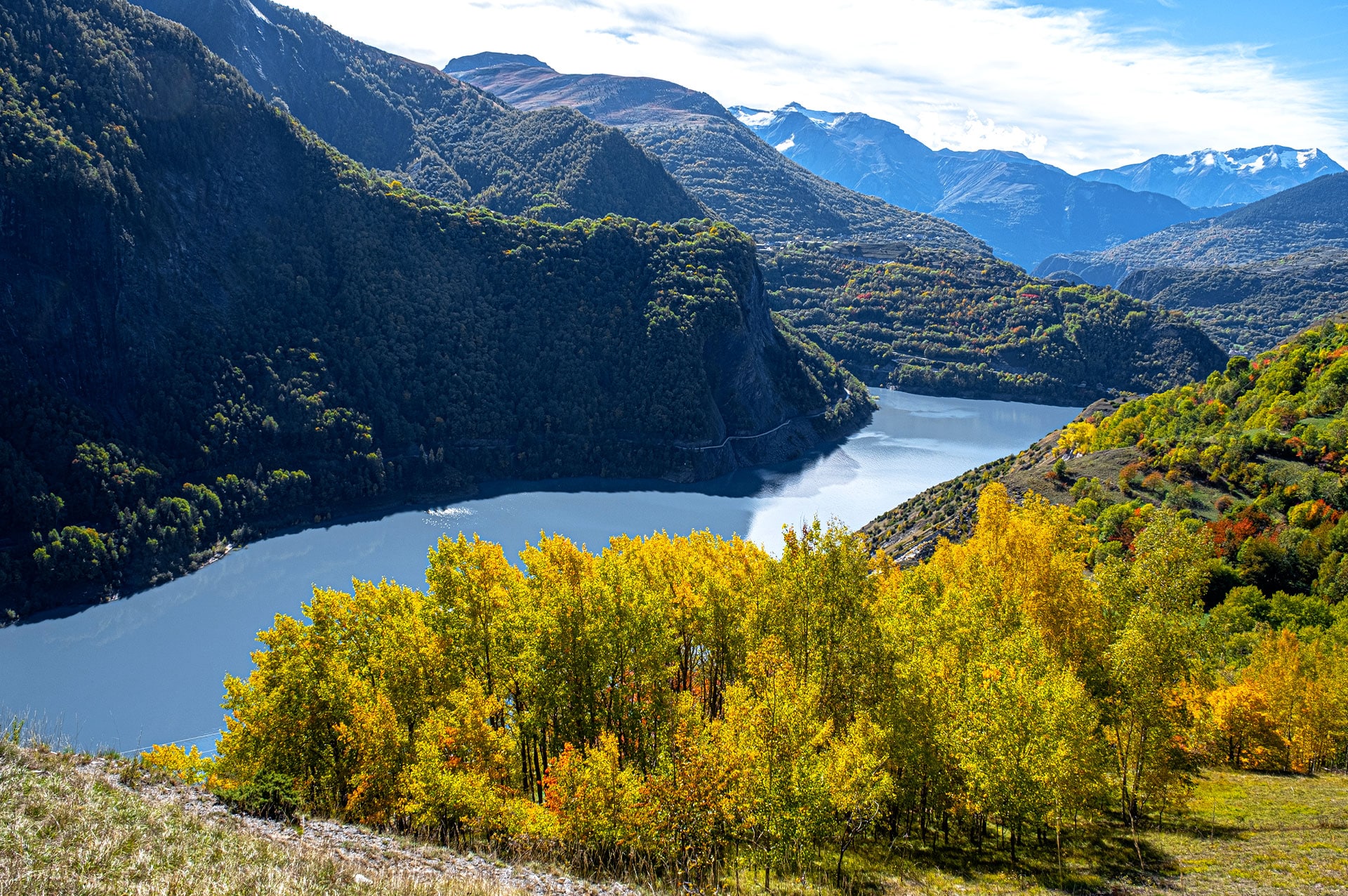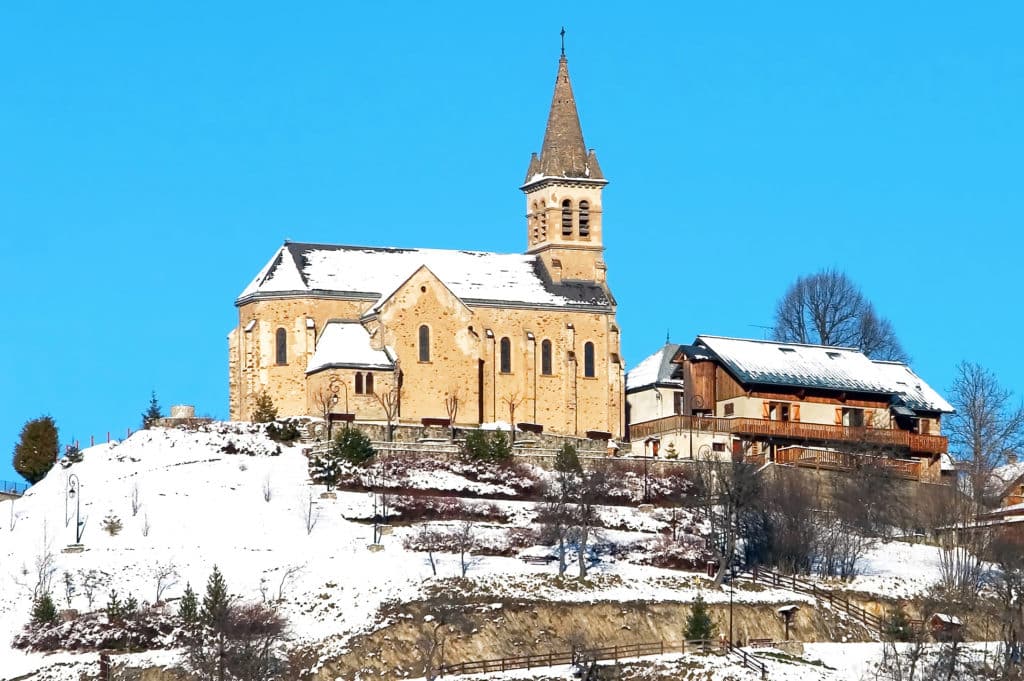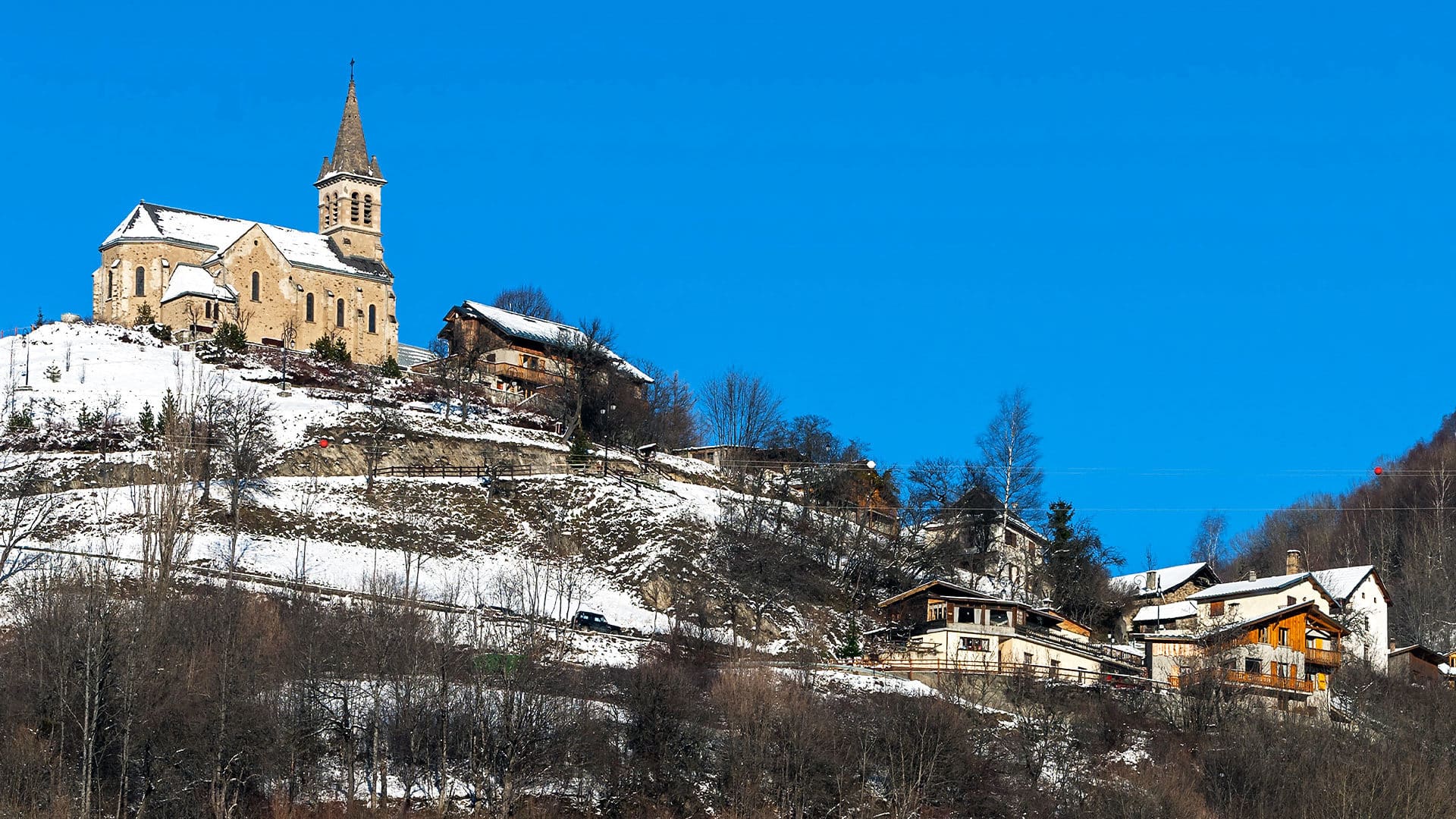Mizoën is a traditional high-mountain village in the Isère department, just a stone’s throw from the Oisans ski resorts of L’Alpe d’Huez and Les Deux Alpes. From the heights of its rocky peak, this remarkable site overlooks Lac du Chambon, a volcanic lake in the Monts Dore mountains. From this small village in the Oisans region, you can enjoy superb views of the Alps, as well as the village’s rural heritage, including a beautiful bread oven. Situated at a high altitude, it is one of the Alpine villages best known to hikers and rock-climbers, who find a wide range of nature walks with varying gradients and numerous slopes to climb in the surrounding mountains.

The characteristicsof the village of Mizoën
Outdoor activities
As the gateway to the Ferrand valley, Mizoën is a magnificent village in bloom, where visitors can enjoy panoramic views of remarkable sites such as Lac du Chambon, La Meije and its glaciers, the Romanche gorges and the Taillefer ridges. As in many Oisans hamlets, life in Mizoën is essentially organized around farming and pastoral activities. This doesn’t stop the locals from getting involved in tourist activities. In any case, the village is strongly attached to its traditions. Its picturesque setting includes a bread oven, a local museum, ancient paths lined with oratories and more.
It’s also a great destination for families, with several leisure facilities on offer. These include the recreation room, kindergarten and playgrounds. The surrounding natural areas are ideal for a wide range of sporting activities, including hiking, cycling and mountain biking, as well as horseback riding, paragliding, downhill skiing, Nordic skiing, ski touring, snowshoeing and, of course, mountaineering.
During your stay in the mountains, you can also take advantage of the opportunity to discover the most beautiful natural areas around you. As soon as you leave the village, you discover emblematic sites such as the Emparis plateau and its lakes, whose waters reflect the glaciers. An ideal vacation rental destination if you’re looking for winter sports, it also boasts numerous hiking trails for walks in the Ecrins massif and its nature park, one of the Auvergne Rhône Alpes region’s top tourist attractions.

History and heritageof Mizoën
Mizoën would mean “at noon”. This would echo the fact that the village is bathed in natural light on its rocky outcrop. It used to be a land of mountain farmers. This identity is honored by the ecomuseum in the hamlet of Clots. The establishment is just a stone’s throw from the refuge. It’s the place to be if you want to find out more about how the farmers of yesteryear organized themselves.
Mizoën was originally located on the banks of the Romanche Gorge, a torrent that meanders between the Hautes-Alpes and Isère rivers. Some discoveries have revealed the passage of a Roman road between Grenoble and Briançon. The village has long been a strategic crossing point across the Alps. A strategic crossing point over the Alps, Mizoën had a population of up to 680 by the mid-19th century. The Chambon dam, built between 1926 and 1935, had swallowed up two hamlets of the village of Mont-de-Lans.
Nearby, you can also discover Auris en Oisans, Oz en Oisans, Val d’Isère and the famous Col du Lautaret.


